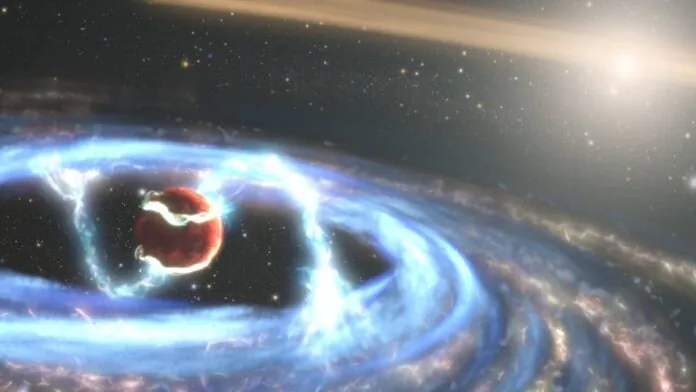© ROOT-NATION.com - Use of content is permitted with a backlink.
Scientific study of the origin of the planets of the solar system began in the middle of the XVIII century. Drawing on the work of the Swedish thinker Emanuel Swedenborg, the famous German philosopher Immanuel Kant suggested that the Sun and its small planetary family grew out of a large, rotating primary cloud. Kant called it Urnebel, which in German means nebula. This idea was later perfected by the French mathematician and astronomer Pierre Laplace, and many more additions and corrections have been made since then. And modern scientists believe that for the most part the theory was on the right track.

Thus, based on this theory, a model emerged that is a triumphant synthesis of threads from geology, chemistry, physics and astronomy, and it would seem that it has every reason to exist. This model was superimposed on the planets around the perimeter of our solar system.
However, the discovery of planets around distant stars in the 1990s made it clear that the picture is much more complex than previously thought. The new planets did not fit into the model at all – space, as it turned out, did not care so much about what is happening here, around our little Sun.

But despite this, one of the most important physical components of the planetary mechanism responsible for the formation of such giant gas planets as Jupiter and Saturn has stood the test of time – the idea of the “core accretion”.
The core accretion begins with gases and microscopic powders, which are thought to form a typical primary Kant cloud (which has the shape of a flattened rotating disk with a young star in the center). Dust particles stick together to form larger particles, then pebbles, rocks and on up in a cascade to baby planets or “planetesimals”. When such a lump becomes large enough, it reaches a critical point. Gravitational gravity now helps the embryonic planet to quickly draw in gas, dust and other clumps, clearing its orbital path and cutting a circular gap in the disk. This is one of the significant triumphs of modern astronomy, that such “disk gaps”, predicted by theory, are now observed and studied in space.

But a hot gas giant similar to Jupiter, which they found in the process of forming around the star about 500 light years from Earth, made scientists question the theory of planet formation.
The star near which the embryo of the planet was discovered is called AB Aurigae (AB Chariot). It became famous in astronomical circles thanks to the beautiful, intricate spiral disk that surrounds her. But so far there was no evidence of the formation of the planet.

And thanks to observations, it was discovered. And was named AB Aurigae b. It is currently surrounded by a dense vortex of dust and gas among control spirals and waves indicating a gravitational collapse. The planet is 93 times more distant from its star, than the Earth from the Sun. Which is far beyond the area where the traditional theory of the core accretion could explain its formation. Thus, this discovery provides convincing evidence for an alternative theory of gravitational collapse.
You can also help Ukraine fight with Russian occupants via Savelife or via an official page of the National Bank of Ukraine.
Read also:
- Mercury was covered by a plasma wave
- Launch your cargo into orbit in 10 minutes with hypersonic space cannon


